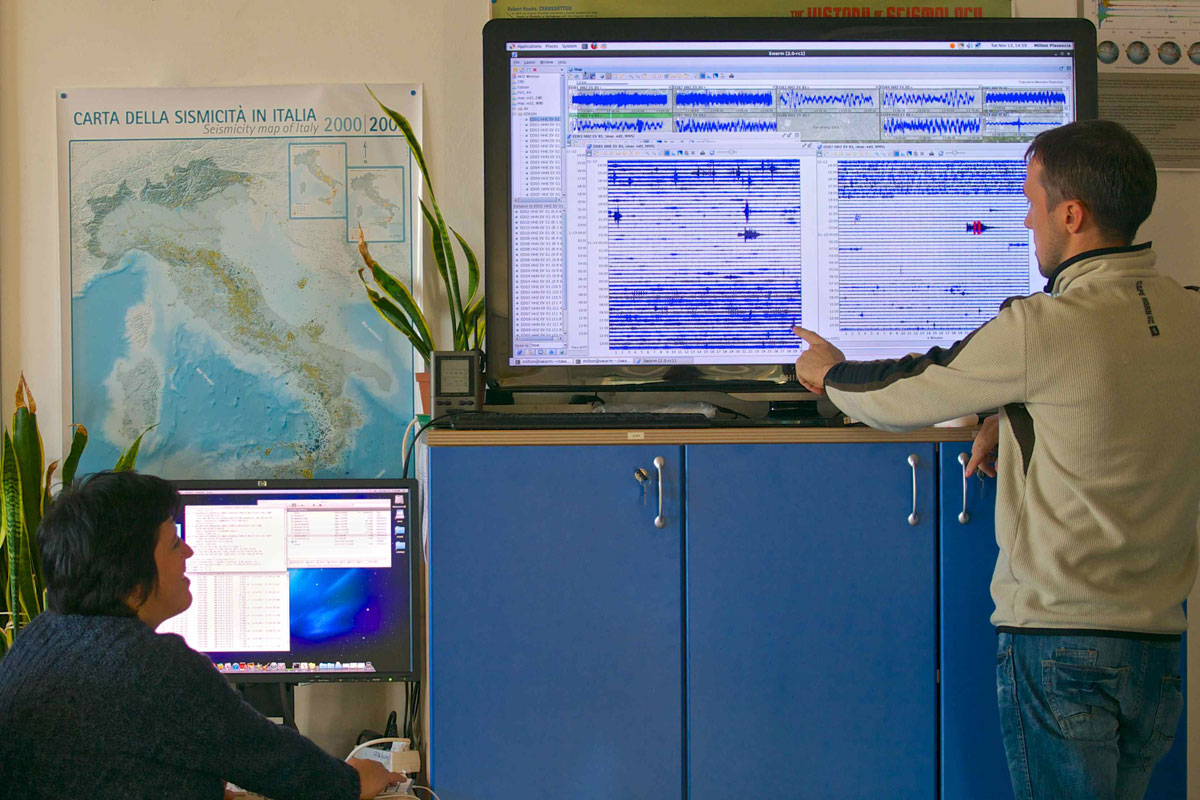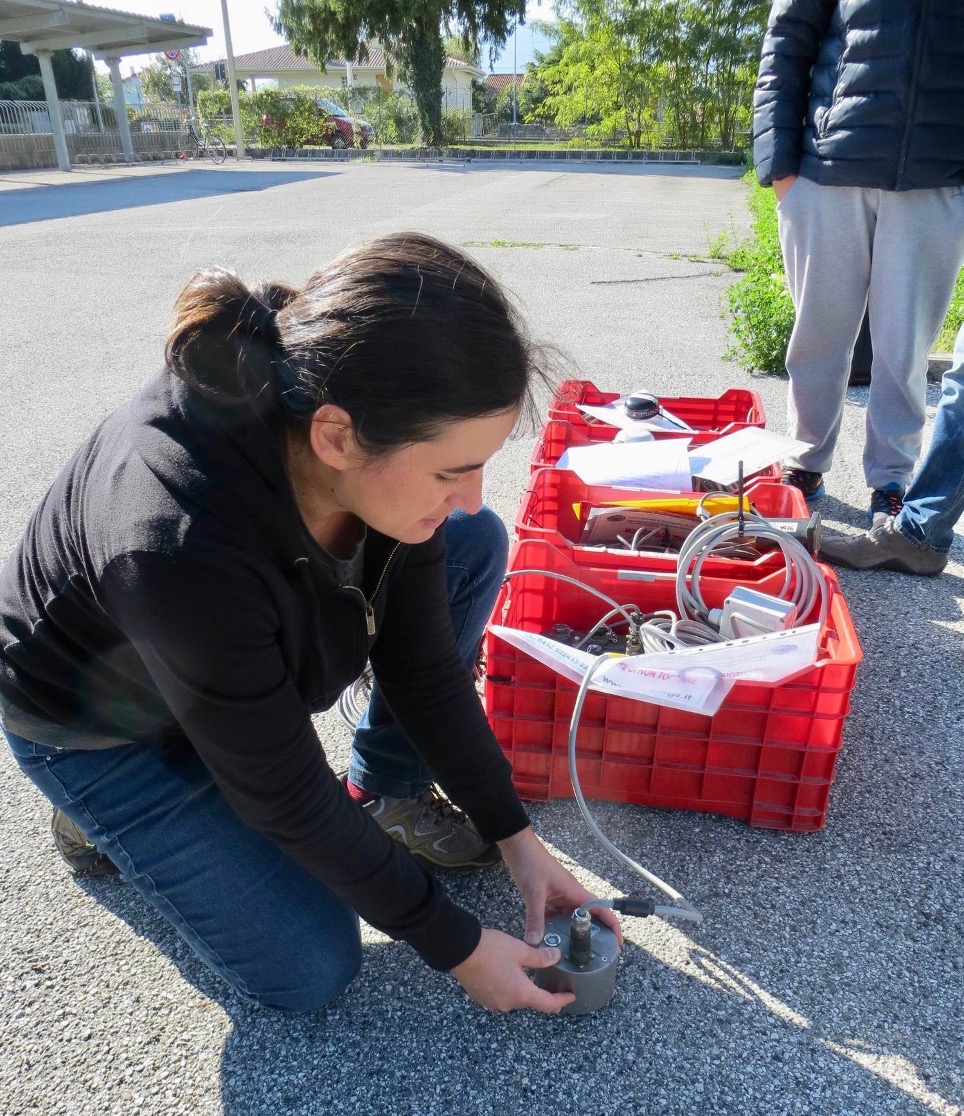The research activity of the scientific group Seismology and Geodesy focuses on understanding seismogenesis (related both to natural causes and to processes induced by human activities) and to the evolution of seismicity in space and time. The group's activities touch on almost all phases of data processing, from acquisition to interpretation and numerical modelling. Key to this aim are studies of experimental and quantitative seismology with applications in the field of seismic monitoring and machine learning seismological applications to enrich seismic catalogues, by developing methods for the detection of microseismicity, repeated earthquakes and seismic transients.
Machine learning and statistical seismology methods are applied to seismic catalogues and particular attention is given to the analysis of energy partitioning during seismic sequences, the spatio-temporal distribution of recurrent strong earthquakes, the identification of clusters, the variation of the fractal dimension, and the estimation of the planes that best approximate the spatial distribution of background and intra-sequence seismicity. Seismicity clusters are also analysed in order to provide a prediction of the probability of strong shocks following the main event.
Part of the research activity is devoted to studying the seismic source and focal mechanisms, both with the classic method of fault plane solutions, based on the polarities of the first arrivals, and with the tensor moment inversion. For small earthquakes, the source parameters are also studied by spectral analysis.
Within the group, an important monitoring activity of industrial sites is carried out, aimed at detecting possible seismicity induced or triggered by anthropogenic activities, complemented by the development of useful methods to distinguish induced seismicity from natural seismicity, and the study of earthquake generation following fluid diffusion or stress variations induced by non-tectonic causes. Monitoring of underground methane storage activities is currently underway at the Collalto (TV) and Cornegliano Laudense (LO) sites.
The arrival times recorded by the seismological networks are subject to tomographic inversions to estimate one- and three-dimensional velocity models and relocate seismic events, both at regional and local scales. Part of the activities is dedicated to constructing crustal models, useful to study, through appropriate modelling, the effects of variations in the field of stress and deformation on seismicity.
Complementary to seismological studies are studies in the geodetic field. The activities concern the processing of GNSS data, (including of course those of the SMINO network) and the analysis of GNSS time series aimed at distinguishing the contribution of hydrological phenomena from that of geodynamic processes in progress, in order to correctly define velocities, and at identifying transient signals. The joint analysis of results obtained from the analysis of GNSS data with those derived from INSAR images completes the group's expertise. Part of the research activity is aimed at identifying and quantifying any deformations induced by anthropogenic activities and displacements due to landslides.
Of special relevance is the development of scientific software, in particular that concerning machine learning methodologies and repopulation of catalogues, instrumental correction preparatory to source studies, to be made available to the scientific community.



